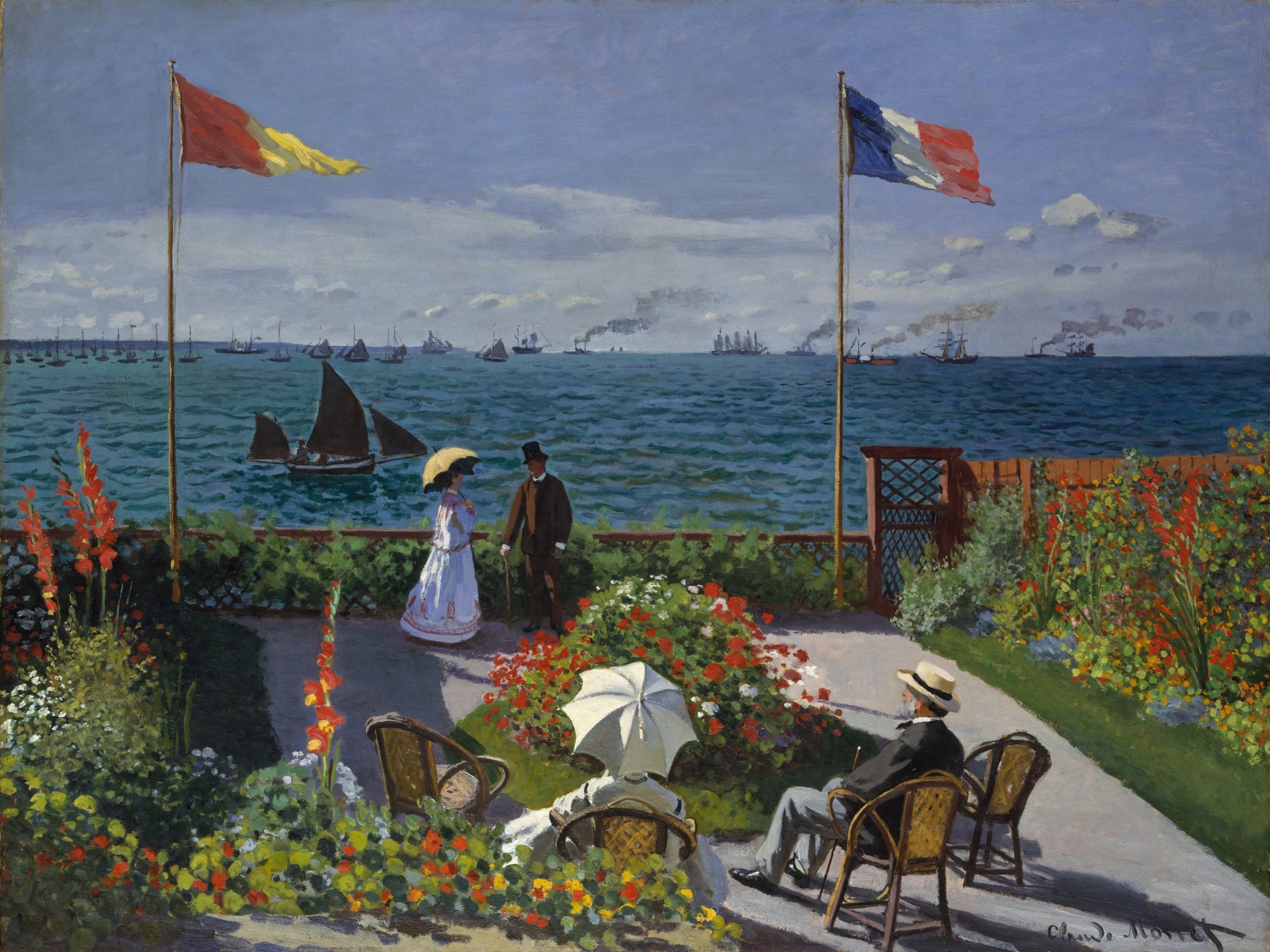 Oscar-Claude Monet was a founder of French Impressionist painting, and the most consistent and prolific practitioner of the movement’s philosophy of expressing one’s perceptions before nature, especially as applied to plein-air landscape painting.
Oscar-Claude Monet was a founder of French Impressionist painting, and the most consistent and prolific practitioner of the movement’s philosophy of expressing one’s perceptions before nature, especially as applied to plein-air landscape painting.
Born: November 14, 1840, Rue Laffitte, Paris, France
Died: December 5, 1926, Giverny, France
Monet grew up in Le Havre where, in 1858, he met Eugène Boudin who encouraged him to paint from nature, en plein air (out of doors). The following year Monet met Camille Pissarro and Paul Cézanne while studying at the Académie Suisse in Paris. After military service in Algiers he returned to study in Paris in the studio of Charles Gleyre, and met Pierre-Auguste Renoir, Alfred Sisley and Jean-Frédéric Bazille, with whom he painted at Chailly, near Fontainebleau. In the late 1860s Monet and Renoir worked together and produced the first pure Impressionist paintings, the best known of which is Monet’s Impression: Sunrise 1872, the painting that gave the Impressionists their name. In 1883 Monet settled in Giverny where he created a remarkable garden that was to be the subject of his last great series of works, culminating in the panoramic series of paintings Nymphéas (Water Lilies), housed in the Musée de l’Orangerie in Paris

56.0 x 67.0cm. Musée de l’Orangerie, Paris
Monet returned to France from London in 1872 and settled in Argenteuil (a town on a picturesque stretch of the Seine, eleven kilometres from central Paris), where he lived until 1876. His contemporaries Pierre-Auguste Renoir, Édouard Manet and Alfred Sisley joined him and, for a time, Argenteuil became a hub of artistic activity. It was during this time that Monet created some of his most characteristic paintings. In order to observe the effects of sunlight on water more closely, Monet often worked from a boat-turned-studio. In Argenteuil, the rust-red boats, painted in contrasting colours to the blue water and sky and the green water plants, are depicted surrounded by shimmering light – perhaps the true subject of the painting
Paintings 1858–1872




Metropolitan Museum of Art




Paintings 1873–1879



Monet’s garden




Late Paintings




Series of paintings



###
